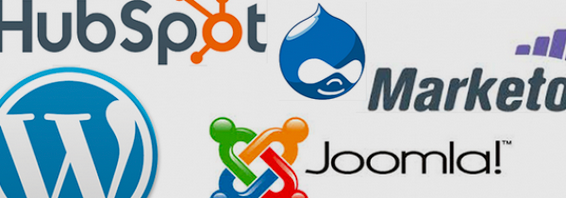Technology is crucial to the effective implementation of a content strategy.
Or to put it another way, you can spend weeks or months defining and planning a strategy but unless you have tools at your disposal to create, distribute, schedule and manage your material, plus the tracking and analytics software to measure your results, your strategy will not travel very far on the journey from brainstorming sessions and planning meetings to the real world.
Now that sounds simple enough. You develop a strategy and you buy in the content management tools. What could be easier? Well the truth is there are a lot of content management tools out there on the market and the challenge is to choose the right content platform for your content requirements.
At the most basic level, a content management system – which may also be promoted as a marketing automation platform or an eCRM system should make it easy to create, publish and manage your content.
And the importance of an easy to use creation tool can’t be understated. A true content strategy requires a commitment to publishing material at regular intervals. A schedule that seems relatively easy to implement at the planning stage can begin to look relentless when the work is underway.
So if your content strategy involves a twice-weekly blog, the update of product news on a daily basis and a weekly e-mail newsletter linking to relevant pages on your site, you require a tool that enables you to rapidly create, upload and manage web pages. Ease of use is essential.
A content management system should also allow you to create a look and feel for your content through templates while also making it easy to position assets such as images and videos within your pages.
Then there’s the question of channels and depending on your requirements, you may require a system that publishes optimised content not only for major web browsers but also for social media.
It’s also important to consider scheduling tools. If you’re implementing a content-hungry strategy (updates several times a week or even every day with various internal and external parties contributing) a calendar mapping publication dates and workflow will be vital.
A Choice of Systems
A content management system doesn’t have to be complex. For instance, WordPress – which began life as a blogging platform – has evolved into an effective CMS solution. Its USP is ease of use. The interface itself is simple and intuitive and hosting is provided through WordPress.org. Equally you can use it in conjunction with your existing hosting arrangements.
WordPress is an open-source product – meaning anyone is free to modify the code and create add-ons and as a result there are a host of plugins available. These include tools to allow you to create forms, schedule and publish podcasts, manage e-mail campaigns or link with payment systems.
WordPress certainly isn’t the only game in town in terms of open-source CMS. – Drupal and Joomla are also widely used – but it remains the most popular.
Putting the Emphasis on eCommerce
An alternative is to use marketing automation platforms (MAPs) such as Marketo or Hubspot.
As with CMS tools these provide the means to create, import and manage content but their focus from the get-go is e-commerce and the automation of marketing processes. In that respect the content management tools available form part of a wider functionality that supports both inbound and outbound marketing.
For instance, Marketo allows you to target e-mail campaigns drawing on CRM data to choose the recipients. In terms of content creation it enables the rapid creation of content-rich landing pages, populated with forms that enable the users to gather leads. A marketing calendar facilitates scheduling and there is integration with social media. Hubspot offers a similar range of features.
Crucially both offer reporting tools which allow users to assess the success of campaigns in terms of leads, sales and engagement and as such provides all the data necessary to hone future content creation.
So the key is to assess the potential CMS options in terms of how they align with your objectives both now and in the longer term. If your objective is simply to educate and inspire customers through blogs or articles, an open-source CMS may be the cost-effective solution. Marketing Automation Platforms and eCRM solutions, on the other hand, offer more for businesses that are using content to directly drive sales and leads.
Photo credits: Andrew Magill, flickr cc, Maria Elena/flickr cc


